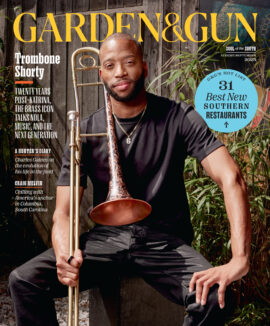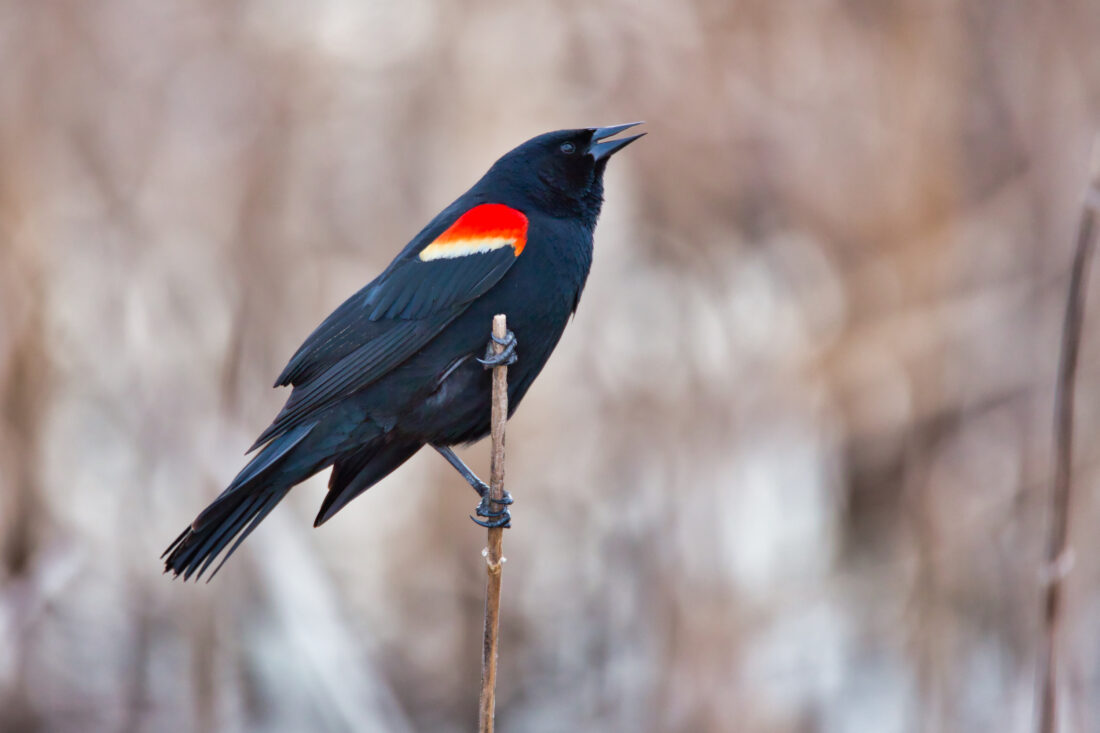When red-winged blackbirds arrive for the winter, people tend to notice. There’s the sheer numbers, for starters—these adaptable avians often travel in huge, swirling flocks of up to a million birds (no, really). Then there’s all the noise they make, and the unmissable glossy black feathers of the males, accentuated by brilliant patches of red and orange on the shoulders. On top of all of that, they’re voracious eaters known to clean out a feeder.

Though the South does have its own resident red-winged blackbirds that stick around all year, the winter months see a lot of extra birds migrating down from Canada and the northern United States, sometimes combining with other blackbirds and starlings in flocks. While some red-winged blackbirds go on to Mexico, many winter right here in the South, visiting states like Georgia, South Carolina, Alabama, and Florida in droves. Come March they’ll start heading back up north, leaving feeders and treetops considerably quieter until next year.
Here are a few things you might not have known about this common—and delightful—backyard visitor.
Those shoulder patches are more than just pretty.
The bright red and orange patches on the males’ shoulders, besides making the species easily identifiable, also play a behavioral role. When defending their territory or calling for a female, the males will puff up their shoulders to make the color more visible. On the other hand, when encroaching on someone else’s territory, they can hide them under plain black feathers. The females, which are a streaky brown and look nothing like the males, prefer a bird with bright shoulder patches.
They’re polygynous.
The males of the species stake out a territory and defend it, and multiple females come and nest within its boundaries; as many as fifteen might live there in a loose colony. In theory, the male fathers all of the chicks within his territory, but less dominant males are always waiting in the wings and trying to sneak in—and do so so successfully that between a quarter and a half of all the chicks in a territory might not be sired by the defending male.
The males have a distinctive song.
A male defending his territory or looking for a mate will often find a high perch from which to perform his song—an abrupt note followed by a musical trill (“conk-la-ree!”)—while displaying himself to best effect by partly spreading his tail and fluffing out the red feathers on his shoulders. Though the birds communicate with a variety of other chits and alarm calls, the “conk-la-ree” is the soundtrack of wetlands across the continent.
They can get territorial.
When it comes to defending what’s theirs, red-winged blackbirds are fearless. During the breeding season in spring and summer, the males spend up to a quarter of their time—and a substantial amount of energy—fighting off other males and defending their territory. They’re not afraid to divebomb an encroaching hawk or owl, either. They also have a mortal enemy closer to their own size, which they attack upon sight: the marsh wren, another common and wide-ranging bird that pokes holes in blackbird eggs.
Their diet changes with the seasons.
During breeding season, these birds load up on the protein of insects like beetles, dragonflies, and moths. In the fall and winter they switch over to grains and seeds. To attract them to a backyard feeder in the colder months, put out sunflowers and seed mixes that include things like corn, peanut hearts, and milo. Though for now they are still a common sight, red-winged blackbird numbers are declining—all the more reason to welcome this fierce little visitor to your yard.








